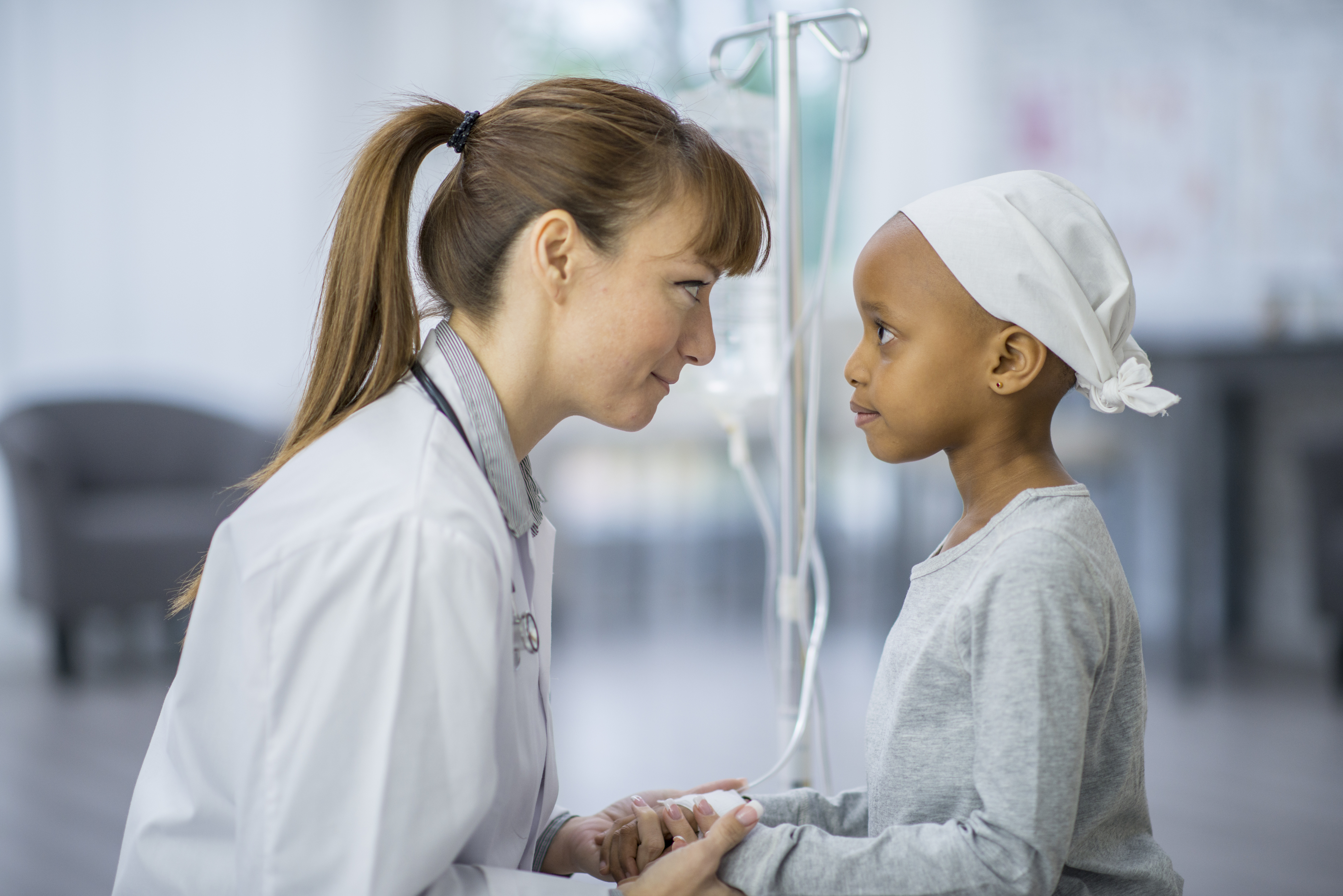What is acute lymphoblastic leukemia (ALL)?
ALL is a cancer of the white blood cells that originates in the bone marrow, the spongy tissue inside the bones. Without treatment, ALL can progress rapidly. Depending on the patient, untreated ALL can lead to severe infections, bone pain, bleeding, and cardiac decompensation (when symptoms of heart failure suddenly worsen) due to anemia.
How common is ALL?
ALL is the most common childhood cancer, accounting for approximately 25% of cancer diagnoses in children under 15 years of age. It affects males slightly more than females, but a higher number of female infants are affected. There is a sharp peak in ALL among children between the ages of 2 to 3 years, with over 90 cases per 1 million children per year. By age 8, rates decrease to fewer than 30 cases per 1 million.
ALL happens when the DNA changes inside an immature blood cell, called a stem cell. The change makes the blood stem cell unable to develop into a mature cell. This mutated cell multiplies and divides rapidly, accumulating into cells called leukemic blasts.
Leukemic blasts cannot carry out the same functions as normal blood cells. They also make it difficult for the bone marrow to produce healthy blood cells, such as:
- Red blood cells: Having too few red blood cells is called anemia. It can make a child look pale, feel tired, and short of breath.
- Platelets: These cells help stop blood flow from a cut or injury. Having too few platelets is called thrombocytopenia. This can make a child bleed and bruise easily.
- White blood cells, which help our body fight infections: A specific type of white blood cell, called a neutrophil, is the first type of white blood cell to help fight an infection. Very low amounts of neutrophils in the blood cause a condition called neutropenia, making a child more susceptible to bacterial infections.
The leukemic blasts can also infiltrate other parts of the body, such as:
- brain and spinal fluid (central nervous system or CNS)
- testicles
- bones
- liver
- spleen
- lymph nodes
What causes ALL?
It is important to remember that no one is to blame for the disease. It is unclear as to what causes ALL. While we know that genetics influence the development of ALL, scientists are exploring how the environment, viral infections, and immunodeficiencies may affect the likelihood of developing the disease.
Genetic factors
Genetic factors are thought to play a major role in the likelihood of a child developing ALL. For example, children with Down syndrome are more likely to develop leukemia than other children.
Other more rare medical conditions might also increase the chances that your child will develop leukemia. These include:
- Neurofibromatosis type 1 (NF1)
- Ataxia-telangiectasia (AT)
- Fanconi anemia
- Shwachman-Diamond Syndrome
- Bloom syndrome
- Li-Fraumeni Syndrome
- Mismatch repair deficiency
Family history
Siblings of children with leukemia, including ALL, have a slightly increased risk of developing the disease. The identical twin of a child with leukemia has a markedly increased risk of developing the disease as well.
Only children who have a family history of a known cancer predisposition syndrome will be screened for ALL.
Environmental factors
Exposure to ionizing radiation and certain toxic chemicals, including previous chemotherapy, is linked to acute leukemia. Based on early studies among survivors from the atomic bomb detonations in Japan, children exposed to high doses of radiation have a greater risk of developing the disease.
There is no evidence that electromagnetic fields (EMF) may cause childhood ALL.
Viral infection
Currently, there is no clear link between a pregnant mother’s exposure to a viral infection and the risk of leukemia.
The Epstein-Barr virus (EBV), the virus typically associated with mononucleosis, is linked to one type of ALL, which is also called Burkitt's leukemia/lymphoma. EBV is also related to endemic Burkitt's lymphoma, which is a form of the disease that occurs in equatorial Africa.
